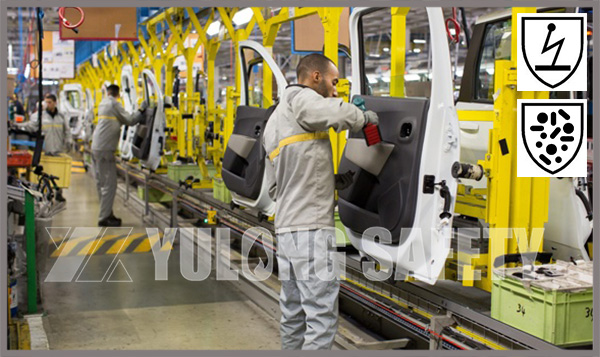


The anti-mircrobial static resistant fabric produced by Xinxiang YuLong Textile Co., Ltd. is a kind of protective fabric with two functions of anti-mircrobial and anti static. The main material of this anti-mircrobial static resistant fabric is cotton and conductive fiber, and the combed cotton fabric has the characteristics of stable color fastness, comfortable hand feeling, good wear resistance, tearing strength and so on. Electric fibers can release static electricity generated by the body through conductive wires, thereby reducing the harm caused by static electricity.
The anti-microbial static resistant fabric produced by the improved anti-microbial process of Xinxiang YuLong Textile Co., Ltd. can effectively inhibit the growth of Staphylococcus aureus, Escherichia coli and Aspergillus niger, and the antibacterial and bactericidal rate of the anti static and anti-microbial fabric remains above 90% after 70 times of water washing, and the antistatic effect can still reach 100%.
Recently we Xinxiang YuLong Textile Co., Ltd. ushered in a guest from the northwest part of Africa engaged in electronic manufacturing. This guest has ordered a large number of anti- mircrobial static resistant fabrics in our company.
Because in the northwestern part of Africa, the hot and dry climate in the summer causes the friction of clothes to produce static electricity, the electricity will cause the damage, the aging of the electronic components and even the fire and explosion in the flammable environment, and the winter climate temperature and wetness can be said to be the paradise of bacteria. Staphylococcus aureus and Escherichia coli, which are common around us, can cause diarrhea, abscess, septicemia and other diseases that threaten people's health. The anti-mircrobial static resistant fabric produced by Xinxiang YuLong Textile Co., Ltd. helps users avoid the harm of summer static electricity and reduce the invasion of bacteria in winter.